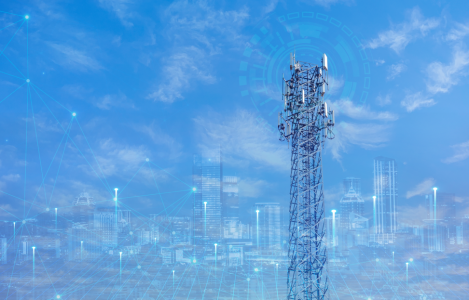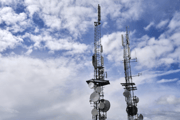Regional residents worry about 4G coverage as 3G network shutdown nears
By
Gian T
- Replies 1
As the digital age progresses, technology evolves rapidly, often leaving behind the old in favour of the new.
This is the case with the impending shutdown of 3G networks across Australia, which has sparked concern and anxiety among many, particularly those in regional and rural areas.
The transition to 4G and 5G networks promises enhanced speed and connectivity, but for some, it threatens to sever their lifeline to the outside world.
The 3G shutdown, scheduled for the end of October, has been a looming reality for some time.
Telecommunication giants like Telstra and Optus have twice extended the deadline in response to public concern.
Despite these delays, many residents in regional Victoria and beyond fear their 4G reception will need to be improved, potentially leaving them without any reception.
For example, former journalist and goat farmer Peter Klages enjoys the tranquillity of his property in Campbelltown, 45 kilometres north of Ballarat.
His peace is overshadowed by the worry that the 3G shutdown will isolate him completely. With weak 4G signals that often fail over to 3G.
‘[The reception] is very, very weak. It's been like that since I moved here. It fails over to 3G quite a lot,’ Mr Klages shared.
‘I miss a lot of calls from family, friends, utilities, and it's virtually useless for any sort of internet interaction.’
‘Apps like Facebook and Twitter are slow to load, and very often pictures don't load.’
Mr Klages reported that he had consistently reached out to Telstra regarding poor coverage.
He had used an app to track nearby mobile towers over the past two years, seeing no improvement in the signal.
He also expressed the view that Telstra had little motivation to enhance coverage in his area due to its low population.
‘The Postmaster General's Department put a manual phone in every household … that's why the old copper wire network is actually so extensive,’ Mr Klager said.
‘But since mobile phones … they go for critical mass [and] concentrate on the metropolitan areas, people who live in rural communities don't get a show.’
Kristine McMillan, who lives on a 485-hectare property near Ararat, requires regular medical treatment for breast cancer.
The lack of reliable phone reception could mean life or death in an emergency.
Despite investing in technology to boost her signal, the future remains uncertain post-3G.
‘If you were up in the paddock somewhere with no phone coverage, if you had a heart attack or something, I guess you just die until someone finds you,’ she said.
‘Telstra … said wait until they switch 3G off and see what happens, which will be too late for some people,’
Professionals like Nhill-based agronomist Marty Colbert, who relies on mobile connectivity for his work across Australia, are also facing challenges.
The 4G network needs to be sufficiently improved to cover the gaps left by the 3G shutdown, which will affect his ability to conduct business effectively.
‘I'm sure they can point to a few places where they have improved it, but it's nowhere I travel, and in my role, I travel not only across Victoria and South Australia but to most places in Australia,’ he commented.
‘I rely heavily on the ability to make phone calls and send and receive data related to agronomy, and it just hasn't been improved.’
‘So it makes me wonder about the validity of [Telstra's] statements that they've had independent reviews done.’
The telcos, for their part, express confidence in their coverage.
‘The reason we are confident of that is our 4G network in regional areas is built on a lower frequency than the 3G network,’ regional general manager Chris Taylor claimed.
However, experts like Associate Professor Mark Gregory from RMIT's School of Engineering question whether enough testing has been done to ensure a seamless transition.
‘I don't think at this stage that there's been enough testing done of the 4G network to safely and satisfactorily turn off the network [and] I think more work needs to be done,’ he rebutted.
‘I think it's wrong to put it back onto the customer to resolve issues.’
He argued that real-world applications often differ from laboratory predictions, and more work is needed to boost connectivity, such as introducing mobile boosters and adjusting transmission on towers.
Optus stated that its customers would see advantages from the shutdown of the 3G network.
‘The 3G switch off will not remove coverage for customers. Our 4G network is larger than our 3G network,’ the spokesperson announced.
For those who rely on 3G coverage for essential services like medical alarms and EFTPOS machines, the advice is to contact suppliers to ensure compatibility with 4G.
Customers can also check if their mobiles are 4G-ready by texting '3' to 3498.

How has the 3G shutdown affected you, and what steps have you taken to ensure you stay connected? Share your thoughts and experiences with us in the comments below.
This is the case with the impending shutdown of 3G networks across Australia, which has sparked concern and anxiety among many, particularly those in regional and rural areas.
The transition to 4G and 5G networks promises enhanced speed and connectivity, but for some, it threatens to sever their lifeline to the outside world.
The 3G shutdown, scheduled for the end of October, has been a looming reality for some time.
Telecommunication giants like Telstra and Optus have twice extended the deadline in response to public concern.
Despite these delays, many residents in regional Victoria and beyond fear their 4G reception will need to be improved, potentially leaving them without any reception.
For example, former journalist and goat farmer Peter Klages enjoys the tranquillity of his property in Campbelltown, 45 kilometres north of Ballarat.
His peace is overshadowed by the worry that the 3G shutdown will isolate him completely. With weak 4G signals that often fail over to 3G.
‘[The reception] is very, very weak. It's been like that since I moved here. It fails over to 3G quite a lot,’ Mr Klages shared.
‘I miss a lot of calls from family, friends, utilities, and it's virtually useless for any sort of internet interaction.’
‘Apps like Facebook and Twitter are slow to load, and very often pictures don't load.’
Mr Klages reported that he had consistently reached out to Telstra regarding poor coverage.
He had used an app to track nearby mobile towers over the past two years, seeing no improvement in the signal.
He also expressed the view that Telstra had little motivation to enhance coverage in his area due to its low population.
‘The Postmaster General's Department put a manual phone in every household … that's why the old copper wire network is actually so extensive,’ Mr Klager said.
‘But since mobile phones … they go for critical mass [and] concentrate on the metropolitan areas, people who live in rural communities don't get a show.’
Kristine McMillan, who lives on a 485-hectare property near Ararat, requires regular medical treatment for breast cancer.
The lack of reliable phone reception could mean life or death in an emergency.
Despite investing in technology to boost her signal, the future remains uncertain post-3G.
‘If you were up in the paddock somewhere with no phone coverage, if you had a heart attack or something, I guess you just die until someone finds you,’ she said.
‘Telstra … said wait until they switch 3G off and see what happens, which will be too late for some people,’
Professionals like Nhill-based agronomist Marty Colbert, who relies on mobile connectivity for his work across Australia, are also facing challenges.
The 4G network needs to be sufficiently improved to cover the gaps left by the 3G shutdown, which will affect his ability to conduct business effectively.
‘I'm sure they can point to a few places where they have improved it, but it's nowhere I travel, and in my role, I travel not only across Victoria and South Australia but to most places in Australia,’ he commented.
‘I rely heavily on the ability to make phone calls and send and receive data related to agronomy, and it just hasn't been improved.’
‘So it makes me wonder about the validity of [Telstra's] statements that they've had independent reviews done.’
The telcos, for their part, express confidence in their coverage.
‘The reason we are confident of that is our 4G network in regional areas is built on a lower frequency than the 3G network,’ regional general manager Chris Taylor claimed.
However, experts like Associate Professor Mark Gregory from RMIT's School of Engineering question whether enough testing has been done to ensure a seamless transition.
‘I don't think at this stage that there's been enough testing done of the 4G network to safely and satisfactorily turn off the network [and] I think more work needs to be done,’ he rebutted.
‘I think it's wrong to put it back onto the customer to resolve issues.’
He argued that real-world applications often differ from laboratory predictions, and more work is needed to boost connectivity, such as introducing mobile boosters and adjusting transmission on towers.
Optus stated that its customers would see advantages from the shutdown of the 3G network.
‘The 3G switch off will not remove coverage for customers. Our 4G network is larger than our 3G network,’ the spokesperson announced.
For those who rely on 3G coverage for essential services like medical alarms and EFTPOS machines, the advice is to contact suppliers to ensure compatibility with 4G.
Customers can also check if their mobiles are 4G-ready by texting '3' to 3498.
Key Takeaways
- Regional residents are concerned about inadequate 4G mobile reception as the 3G network shutdown approaches
- Telstra and Optus have delayed their 3G shutdown until October 28, offering more time for increased public awareness and device compatibility checks.
- Experts and residents are sceptical about coverage predictions and believe more testing is needed before safely turning off 3G.
- Telecommunications companies remain confident in their 4G coverage, stating that the shutdown will not reduce customer coverage.
Last edited:








